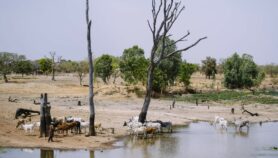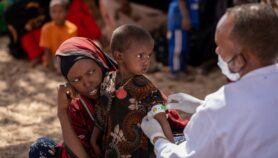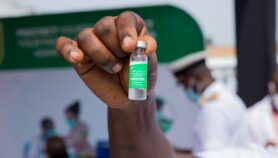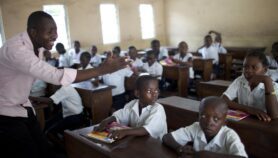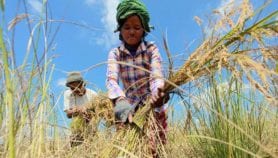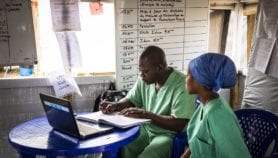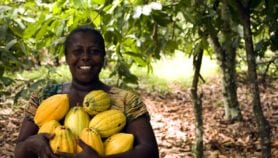By: Calvin Otieno
Send to a friend
The details you provide on this page will not be used to send unsolicited email, and will not be sold to a 3rd party. See privacy policy.
[NAIROBI] Three projects targeting the deadly viral cassava diseases, cassava brown streak disease (CBSD) and cassava mosaic disease (CMD), have received a financial boost for research and development focused on developing resistant varieties in Eastern Africa.
The four-year research projects, worth US$10.6 million, aim to salvage one of the world’s top cash crops and the staple food for 500 million people across the developing world. The projects were launched in Dar-es-Salaam last month (9 November), by Tanzania’s Ministry of Agriculture, Food Security and Cooperatives and the Bill & Melinda Gates Foundation.
The first project, Cassava Varieties and Clean Seed to Combat CBSD and CMD (5CP), aims to boost the sharing of five top seed varieties from Kenya, Malawi, Mozambique, Tanzania and Uganda for regional testing across the countries. The overall goal is to accelerate the development of varieties with dual resistance to the two diseases.
SPEED READ
- Multimillion dollar funding for cassava research aims to boost sharing of disease-resistant seed
- Advanced technologies will help accelerate and increase the accuracy of breeding programmes
- Local experts say that to ensure farmers adopt new seeds, efforts must focus on building awareness
Led by the International Institute of Tropical Agriculture (IITA), an African agricultural research organisation with branches across the continent, the project will also pilot novel systems for producing clean breeders’ seed — seeds free from the diseases — in Tanzania that will be multiplied by local communities or seed entrepreneurs who will sell them to farmers.
Morag Ferguson, a plant molecular geneticist at IITA’s Kenya office, tells SciDev.Net: "The project aims to use advanced technologies such as molecular marker-assisted selection to speed up and increase the accuracy of breeding for new CBSD and CMD resistant varieties in Uganda and Tanzania."
The second project to receive funding, the Commercially Sustainable Quality Assured Cassava Seed System, will build the capacity of seed entrepreneurs to produce disease-free cassava planting material to be sold to farmers. The project is led by the Mennonite Economic Development Associates, an international network working to create business solutions to poverty reduction.
The final project, the Community Action in Controlling Cassava Brown Streak Disease through Clean Seed, is led by the Department of Research and Development at Tanzania’s Ministry of Agriculture. It promotes community-based approaches to CBSD management and control.
"The project will develop diagnostic tools for detecting viruses that cause CBSD and CMD, and a team is working on how to diagnose, characterise, monitor and sustainably manage the viruses," says Joseph Ndunguru, a plant scientist at the Mikocheni Agricultural Research Institute in Tanzania.
Ivan Rwomushana, staple crops programme assistant at the Association for Strengthening Agricultural Research in Eastern and Central Africa, tells SciDev.Net: "The development of varieties with dual resistance can potentially wipe out CMD and CBSD."
But "science in this area takes time," he warns. "The biggest challenge in breeding efforts, particularly for CBSD, is the variable nature of the virus: when crossing two [plant] parents, there is no guarantee that the offspring will be better [at fending off the virus] than the parents."
Furthermore, many farmers can be reluctant to use the new varieties, particularly if the resultant cassava tastes different to local varieties.
"The advantages of the new varieties will have to be emphasised if the project is to attain the kind of impact required," Rwomushana adds.
This article has been produced by SciDev.Net’s Sub-Saharan Africa desk.
See below for Gates Foundation video on cassava mosaic disease:



